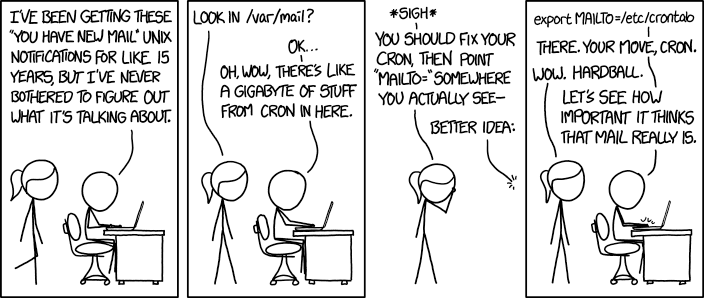Last night I converted by pebble from being a single contained unit, to a 3
part kit.
I am probably going to have to replace it.
Pebble the company is dead, I can still get replacement hardware from amazon or
ebay and I suspect it will be generally available at reasonable prices for a
year or two.
I used my pebble for 3 things
-
It's a smart watch, so I used it as a watch for time and date
-
I used it for weather, with the
awesome relaxing watch face
-
The vibrate function is amazing for notifications. My phone hasn't been off silent for since I got the pebble, notifications for calls and messages are awesome. Better I can forward notifications from a service
bus app like pushover
and generate them based on things I want.
I can just wear a watch to deal with 1, for 2 I am probably going to use the
awesome forecast.io app and not rely on being able to casually check the
temperature.
For 3 I am really at a loss what to do. I could just replace the pebble, but
really I think I want a smart band with a vibration motor for notifications.
If what I want doesn't already exist, it is probably too niche to ever become a
thing.
Reading:
The Moon is a Harsh Mistress, The Difference Engine
release(7)
documents a set of shell scripts for creating FreeBSD release
files in same manner as the release engineering team. The script creates a new
chroot
environment, checks out a fresh tree, doing the release builds in a
clean environment.
That might be what you want.
I want to write some scripts that take in a specified network, some git commit
ids and generates a set of virtual machine images running in
bhyve
to
reproduce a test environment. Building in a clean environment isn't what
I need.
The Makefiles in
release
expect to be run from a tree that already has a
built kernel and world. They make building the VM images really easy, but apart
from comments in the files aren't documented.
I am going to use a directory for all of the stuff:
freebsd/
-> src # freebsd src tree
-> obj # object directory
-> destdir # freebsd destination direcory
$ cd freebsd
$ git clone https://github.com/freebsd/freebsd.git src
$ cd src
Build the kernel and world, setting the object directory to the one in our tree.
$ env MAKEOBJDIRPREFIX=/home/user/freebsd/obj time make -j4 -DKERNFAST buildkernel
$ env MAKEOBJDIRPREFIX=/home/user/freebsd/obj make -j4 buildworld -DWITH_META_MODE=yes -DWITH_CCACHE_BUILD -DNO_CLEAN
Move to the release directory to build our VM images:
$ cd release
# env MAKEOBJDIRPREFIX=/home/user/freebsd/obj make vm-release -j4 DESTDIR=/home/user/freebsd/destdir WITH_VMIMAGES=yes VMFORMATS=raw NOPKG=yes NOPORTS=yes NOSRC=yes
# env MAKEOBJDIRPREFIX=/home/user/freebsd/obj make vm-install -j4 DESTDIR=/home/user/freebsd/destdir WITH_VMIMAGES=yes VMFORMATS=raw NOPKG=yes NOPORTS=yes NOSRC=yes
I exclude, packages, ports and the
src
distribution in the images.
As a test launch a
bhyve
VM with our created disk image:
# sh /usr/share/examples/bhyve/vmrun.sh -c 4 -m 1024M -t tap0 -d ../../destdir/vmimages/FreeBSD-12.0-CURRENT-amd64.raw test
Reading:
The Moon is a Harsh Mistress, The Difference Engine
Back in January
I wrote about a small tool I had thrown together to do
some internet measurements. Back then we decided not to take the next step and
attempt to roll the tool out to a large audience.
We have decided we need the network edge data after all and I need your help.
First, you can get edgetrace from
https://trace.erg.abdn.ac.uk
In short:
We need measurements from as many network
edges
as possible.
Places where people connect are almost always near the edges of the internet.
Your home, office, the pub or a park with WiFi is probably near the edge. We
need your help by running our tool from these sorts of places. The more the
better.
In full:
Packets on the internet are given a Best Effort service by
default, everything is treated the same. The packets for your video call are
treated the same way as a large download, but that means there is more latency
when queues grow and packets in your file transfer are dropped when there is
network pressure. With Quality of Service and Active Queue Management we can
build networks that allow latency sensitive packets through the queue quicker
while also stopping packets that shouldn't be dropped from being dropped.
The DSCP Bits in the IP header are used give different IP packets different
Quality of Service classes. Right now, no one is really sure how these marks
are treated; Are they removed? Changed in someone way? Or much worse, does the
presence of these marks lead to packets being dropped?
To find this out we need to perform a survey, we can (and have) bought time on
virtual machines in data centers, but that only measures things that are close
to the network core. We also need to measure how these marks are treated at the
edge, on connections that real people use.
There isn't anyway to easily perform these measurements without asking a whole
lot of people for help. This is where you come in.
We need you to download and run our tool. If you can do it from home, the bus
or the train that is excellent. Every run of the tool helps us build up more
data about what is happening in the internet.
Thank you for helping make the internet better.
Reading:
The Moon is a Harsh Mistress, The Difference Engine
